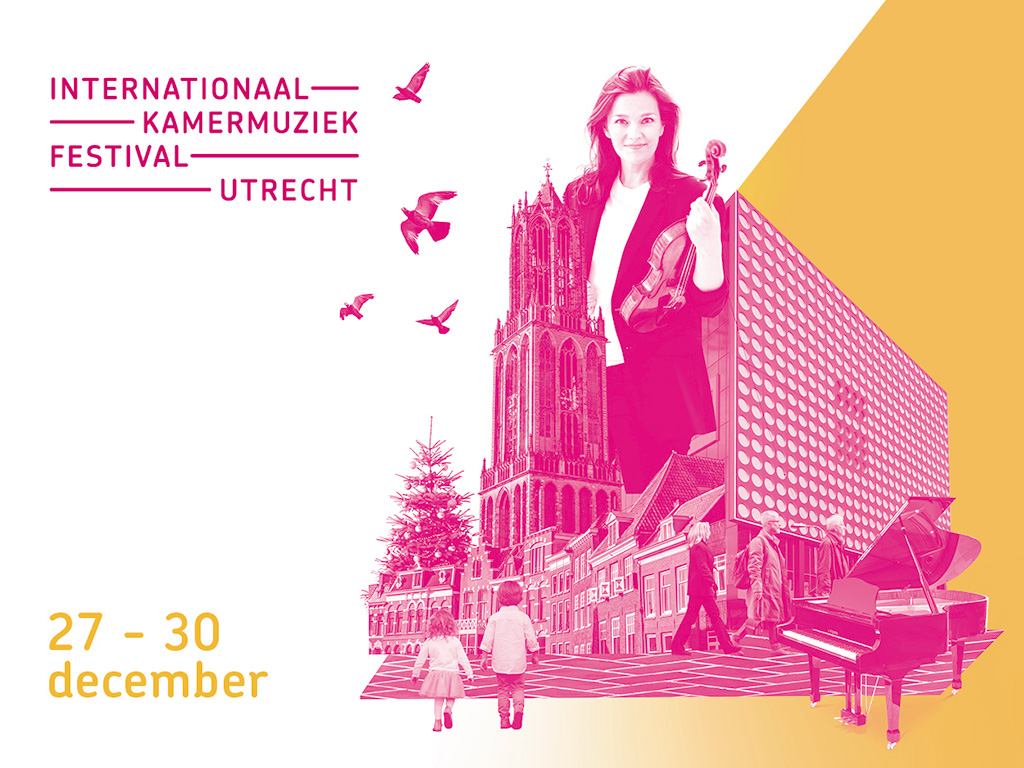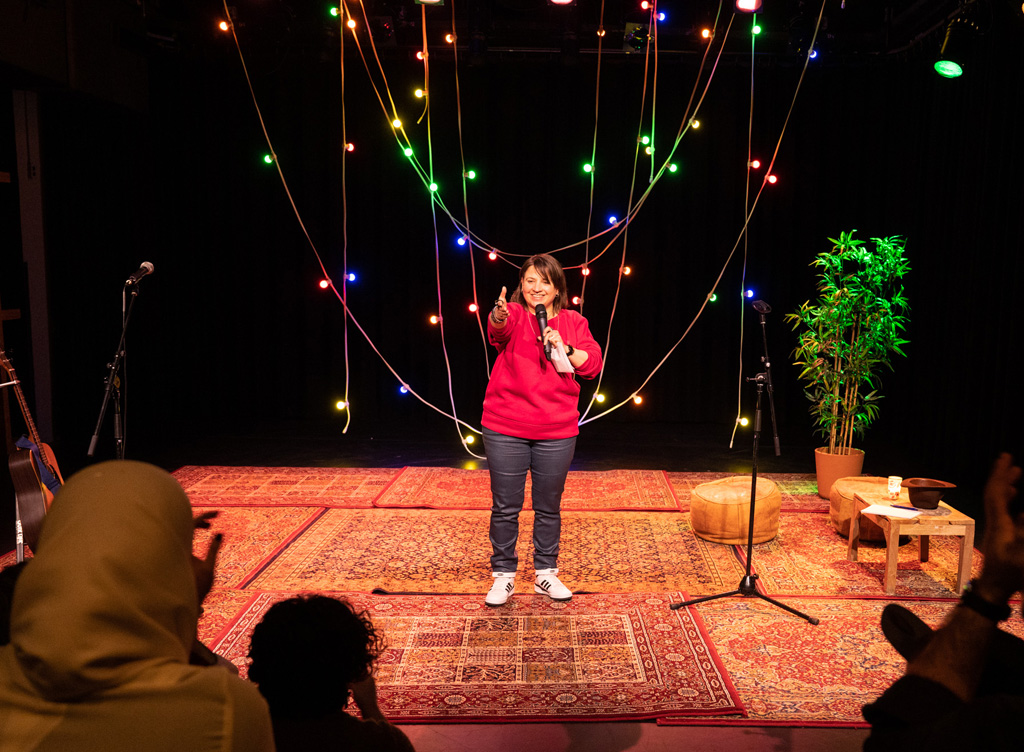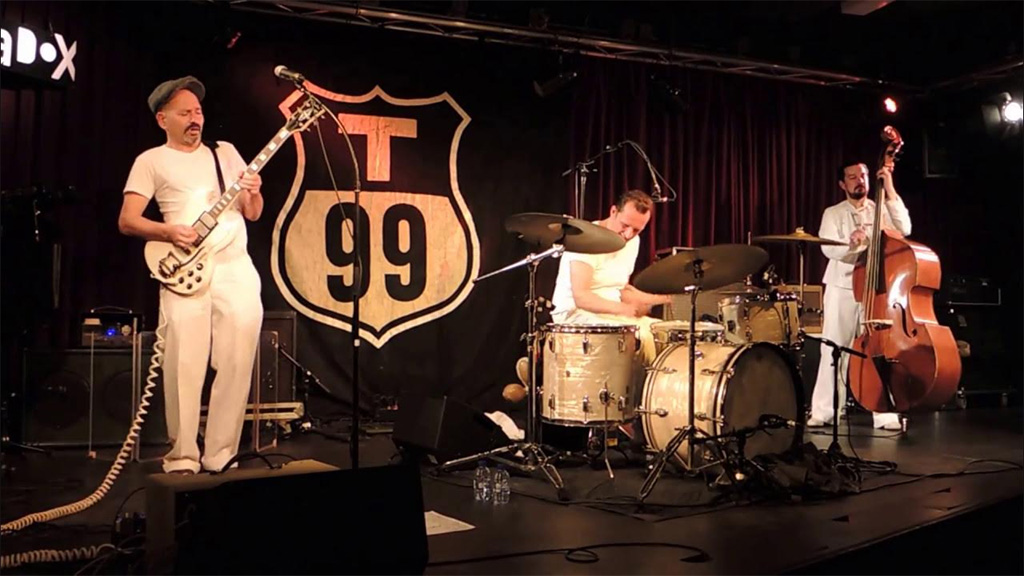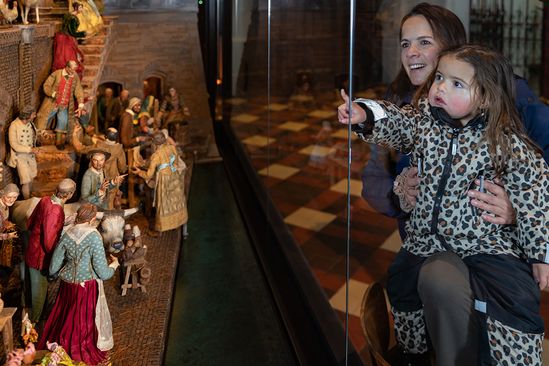Why do people actively slam into each other at concerts? This behaviour looks intense and violent, but it’s actually a sign of solidarity. An introduction to mosh pit etiquette: the dos, don’ts and moves.
You’re ready and waiting. You’ve got a beer in your hand, the lights go down, the background music fades and the artists take to the stage. The first live chords sound and you feel a shove in your back. Your beer goes flying and a swirling mass of people collects in the middle of the space. From hardcore punk to hip-hop and dance events: mosh pits are a force to be reckoned with.
The phenomenon, also known as ‘slam dancing’, first emerged in the 1960s in Los Angeles, where surf punkers used the pit to let off steam. The term ‘moshing’ was originally a misunderstanding. Singer in the American band Bad Brains yelled ‘mash it, mash it!’ during a concert. Due to his Jamaican accent, people thought he was saying ‘mosh it’, and the term stuck.
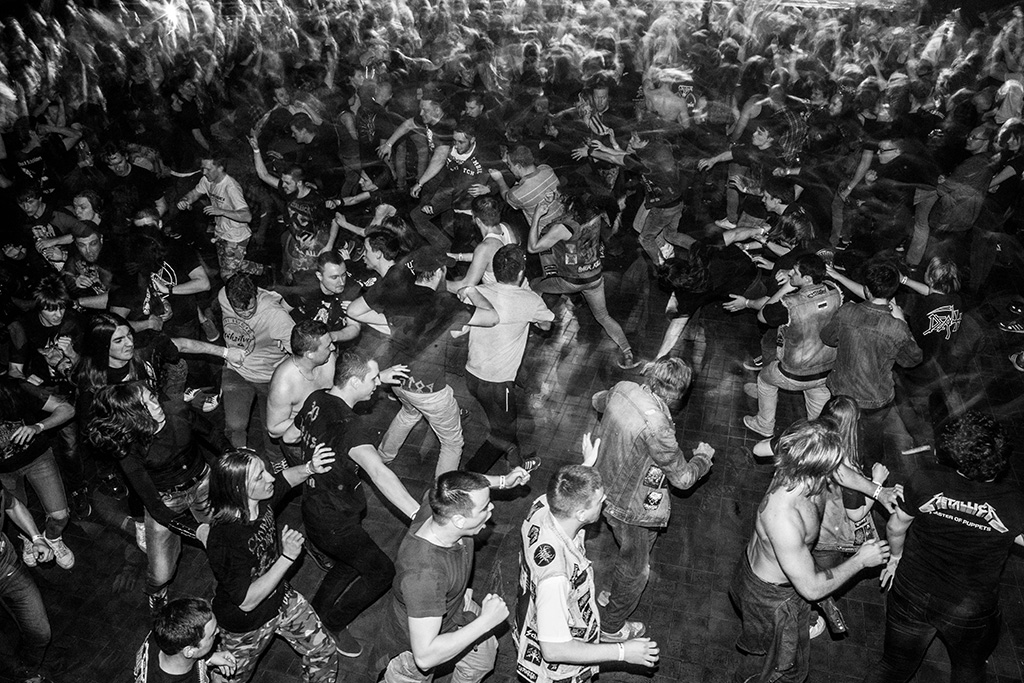
Tribute
Why do fans like a mosh pit? Christoffer van Teijlingen, guitarist in the Utrecht rock band John Coffey, knows exactly why people are drawn to it. This band is well-known for its mosh pits. According to Christoffer, moshing is invigorating: ‘Yes, you slam into each other, but it’s always with a smile.’
Hip-hop artist Simon van Klooster (or Sippy Cup) agrees. ‘You can release all your emotions in a mosh pit: joy, anger, frustration, sadness. And at the same time, you feel solidarity.’
For the artists, nothing compares with this phenomenon. ‘We see it as a tribute,’ says Simon, ‘getting a mosh pit is special.’ Christoffer: ‘Seeing people stage diving and crowd surfing to your music gives you a real kick.’
Violent dancing
The biggest mistake people make about mosh pits is thinking that they’re always aggressive. It differs per genre. Hardcore and deathcore mosh pits are known to be hard, but this definitely isn’t true of mosh pits at pop punk concerts. Christoffer remembers shows where bands actively promoted ‘violent dancing’. This is a dance form punctuated by frantic arm waving and high kicks, where you ‘Enter at your own risk’. ‘This is the reason that audiences come to see these bands,’ he explains. ‘It’s a mini-scene in itself.’ There are also shows where there’s room for people to practise their own moves, like Gorilla swings or Windmills (see the abc in the textbox).
But, says Christoffer, John Coffey’s mosh pits are totally different. At our concerts, you see the classic ‘push pits’, where people pull and shove each other. And John Coffey likes to make things even more spectacular. Christoffer once went into the pit with his guitar during a gig, and during the band’s Coffeyfest festival, fans can skate into the mosh pit from a skate ramp.
Mosh pits in the hip-hop scene are friendly too, says Simon. ‘Hip-hop music features a lot of bounce elements, so your instinct is to jump. People gravitate towards each other and before you know it, you’ve got a ‘‘bounce pit’’ where everyone’s jumping together.’ But whatever the genre, the most important rule is: if someone falls, the rest stop moshing and help them up.
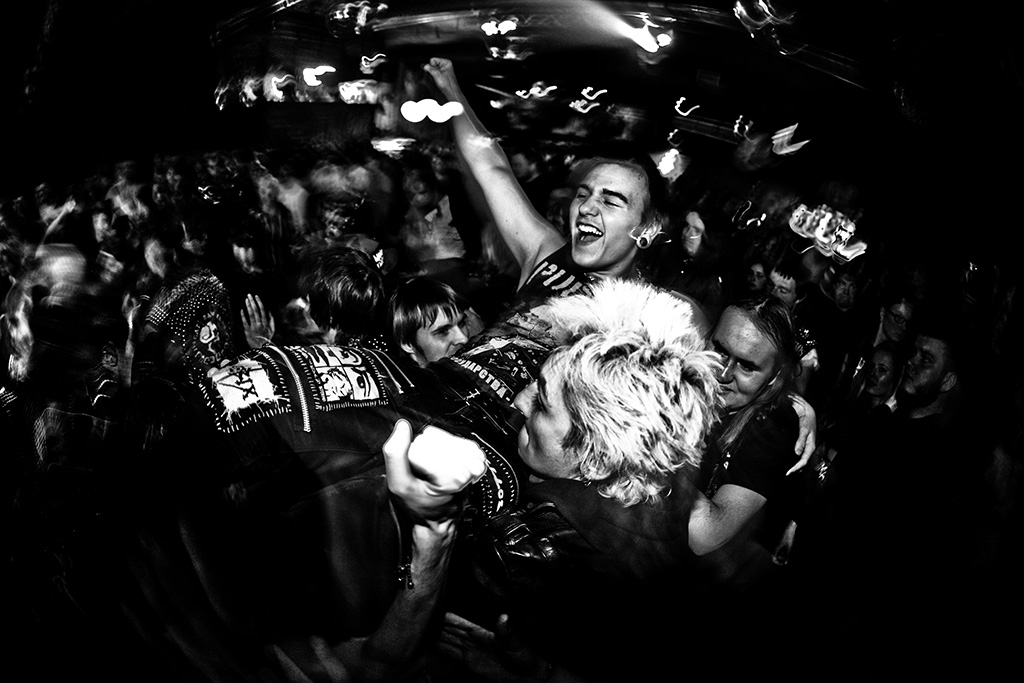
Liberating
Mosh pits are places where solidarity and mutual respect reign. It’s ‘not done’ to drag people into the pit against their will. And ‘crowd-killers’ (see the abc) are seen as losers in the pit. Christoffer: ‘Anyone seen waving their elbows around will be warned off by the rest.’
John Coffey sees this as the band’s responsibility too. The musicians can often be heard calling ‘Look out for each other!’ during their shows. Taking care of one another is what makes mosh pits safe and fun. And if you’re thinking about having a go yourself, try ‘dipping your toe in’ from the side. ‘We try to be a good starter model,’ Christoffer explains.
Women are welcome in the mosh pits, he continues. ‘Some bands organise special women-only pits, but we’re lucky that women just dive into our mosh pits anyway. The main thing is that people are aware of how tall and strong they are, and keep an eye on each other.’
So mosh pits can be a liberating experience of shoving, falling, getting up and above all, smiling. Christoffer: ‘Then giving each other a good hug afterwards.’
Fancy diving into a mosh pit? This month, Loose Ends is returning to Utrecht: a festival packed with bands who know how to make a noise. The line-up includes Crows, The Bug Club, TVOD, Humour, Upchuck, DAUFØDT, Bowl and Femme Fugazi.
23 August 2025, Beton-T
A mosh pit abc
| ● Backflip/Flip Pit: Flips in of rond de pit, vaak voor de show. ● Crowdkilling: Doelgericht trappen of slaan naar mensen buiten de pit. Dit gedrag wordt vaak ter plekke bekritiseerd. ● Crowdsurfing: Jezelf over het publiek laten dragen ● Circle Pit: Een groep rent in een cirkel, vaak tijdens snelle stukken of build-ups in een nummer. ● Floorpunch: Lage stootbeweging richting de vloer, vaak met brede passen. ● Gorilla Arm Swing: Grote zwaaiende armbewegingen, alsof je als eengorilla ramt. ● Haymaker Swing: Grote, overdreven boksslagen in de lucht. ● Headbang Pit: Cirkel of groep die alleen headbangt in plaats van duwen of dansen. ● No Pick Up, No Pit: Hardcore mantra. zonder respect geen pit. Gebruikt tegen crowdkilling. ● Open Up the Pit: De aankondiging of het seintje om ruimte te maken voor chaos of Wall of Death. ● Picking Up Coins: Dansbeweging waarbij iemand voorovergebogen staat en stootbewegingen naar de grond maakt, alsof hij/zij muntjes van de grond raapt. ● Pit Ninja: Iemand die overdreven martial arts-achtige bewegingen doet in de pit. ● Pit Respect: De belangrijkste regel: als iemand valt, help je diegene meteen omhoog. ● Pogo: Recht op en neer springen op de beat. Oorspronkelijk uit de punkscene. ● Push Pit: De klassieke pit waarin mensen duwen en trekken. Meestal vrij vriendelijk. ● Spin Kick: Een draaiende trap in de lucht. Wordt gebruikt in intensere hardcore pits. ● Stage Dive: Iemand springt van het podium het publiek in, daarna vaak een crowdsurf. ● Two-Step: Dansmove waarbij je op de maat je voeten naar voren schopt, vaak in combinatie met armbewegingen. ● Wall of Death: Twee groepen staan tegenover elkaar en rennen op een teken op elkaar in. ● Windmilling: Armen zwaaien in grote, voorwaartse cirkels. |



